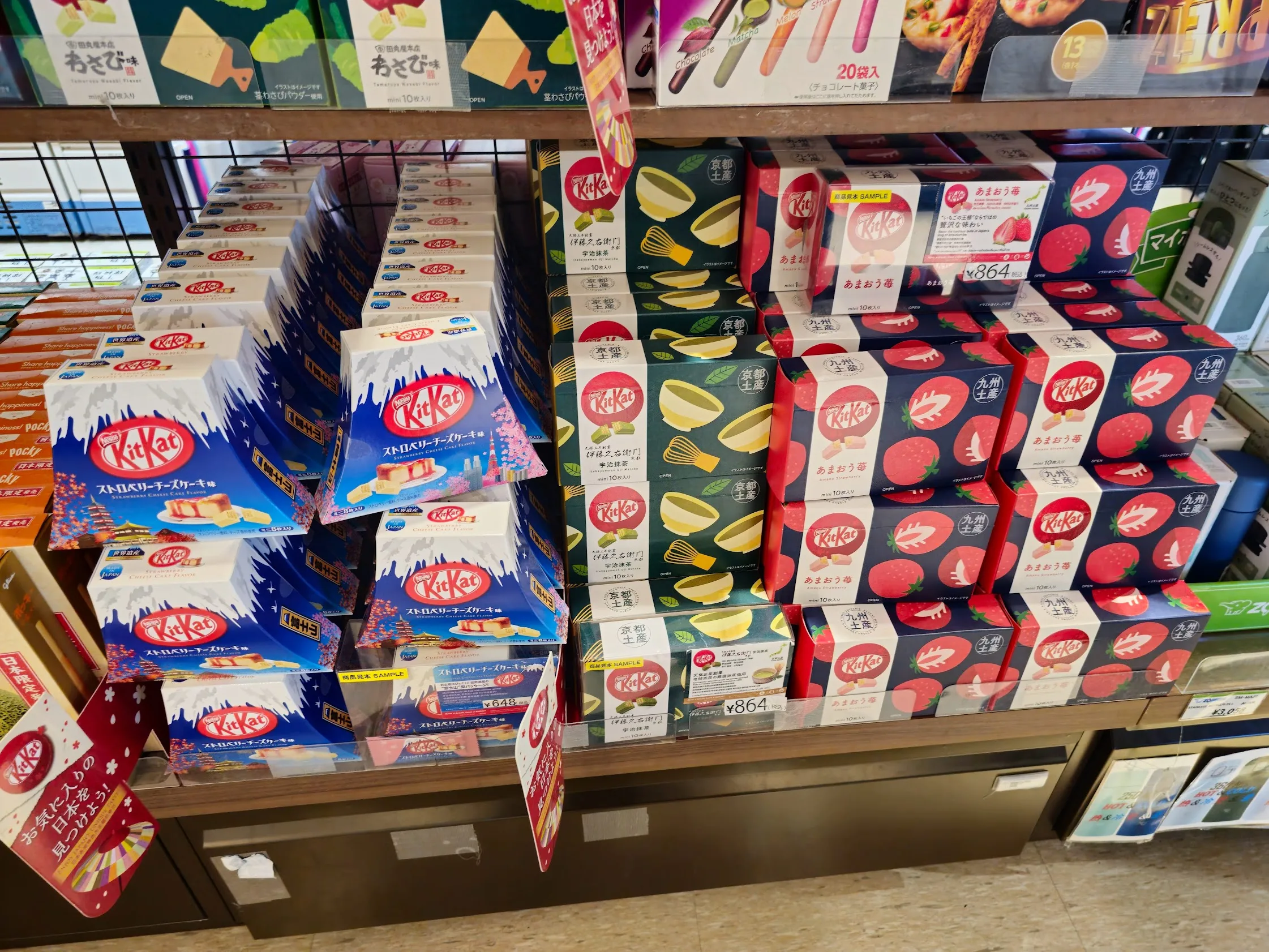
Nestle KitKat – Japan + Australia
Taste how 20 years of Japanese experimentation have changed the classic chocolate candy
For years, Nestle has allowed its Japanese subsidiary to experiment wildly with KitKat candy bar flavors – a trend that spread to Australia as well. Now these special editions are being imported into the United States for sale here.
KitKat’s basic formula has remained the same since 1935, when UK candy manufacturer Rowntree developed the Chocolate Crisp, combining finger-shaped crispy wafer bars with milk chocolate coating and filling. In the United States, chocolate isn’t the only choice for KitKats today, but it’s certainly the most commonly available. By contrast, the Japanese market has seen literally hundreds of different KitKat flavors – over 400 by 2018, as the New York Times reported – since starting with a strawberry-milk chocolate experiment in the early 2000s.
Some of the special edition Japanese Kit Kats we’ve found locally include:
- Strawberry, a riff on the original Japanese experimental flavor with more strawberry and no chocolate
- Cheesecake, strong enough to ensure you’ll actually catch a whiff of cheese in your first bite
- Cookies & Cream, a fairly plain white chocolate-cookie crumb candy
- Peach, which goes beyond candy norms to ensure an initially strong impression with a peachy scent and flavor
- Chocolate Orange, maybe the best such implementation of that flavor yet, tasting conspicuously of fresh orange juice
- Strong Matcha, which fails to fully live up to that name, but then, we’re big matcha fans and have high standards for “strong”
- Mint, quite possibly the best Kit Kat ever made, with strong mint chocolate flavor
- Pudding, a remarkable facsimile of flan-style Japanese pudding
- 72% Cocoa, a bitter dark chocolate
- Biscuit, a neutral and not unpleasant whole wheat with light sweetness
- Salt Lemon, which leads with citrus and finishes with just enough salt to accentuate the lemon – really nice
- Banana Caramel, which tastes like bananas foster
- Strawberry bites (also available in Biscuit) – little cookie-like strawberry glaze nuggets
- White, a forgettable white chocolate
In a major difference compared with U.S. KitKats, Japanese candies are typically sold in bags with “mini KitKats” individually packaged inside – two small finger-like bars per package (versus four longer ones in a standard U.S. wrapper), with between 9 and 11 minis in a bag. This virtually guarantees you’ll want more than what one little bag contains.
Nestle Japan also sells particularly “adult” mini KitKats in boxes of 10, typically at higher prices. Sake and hojicha were available both on our most recent visit to Japan and at 99 Ranch, briefly; specific regional versions of matcha green tea, strawberry, strawberry cheesecake, and even grated wasabi were available in box sets.
Australian customers have access to flavors such as Tasmanian Mint, hazelnut, three different caramels (salted caramel, gooey caramel, and crushed caramel “gold crush”), honeycomb buzz, peanut butter, and orange. In the United States, recent flavors such as Lemon Crisp and various sugary cake pop-like seasonals have shown up.
Most of the Japanese KitKats in our photos came from 99 Ranch Market, with others from H Mart, while Australian ones can be found at Cost Plus World Market. Even though the Japanese flavors are becoming harder to find at 99 Ranch and H Mart, the Japanese KitKats can be ordered online here. Expect to pay roughly $6 for a bag of between nine and eleven mini Japanese KitKats, or around $3 for the bite-sized nuggets. And expect to find it hard to go back to plain KitKats once you’ve tried them.
